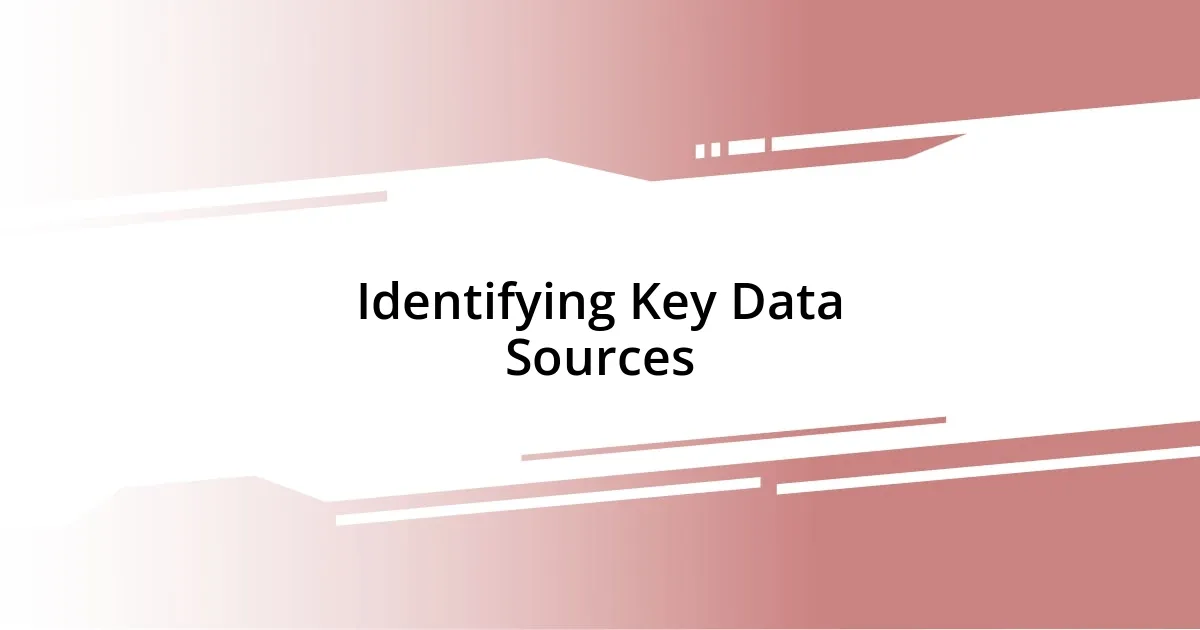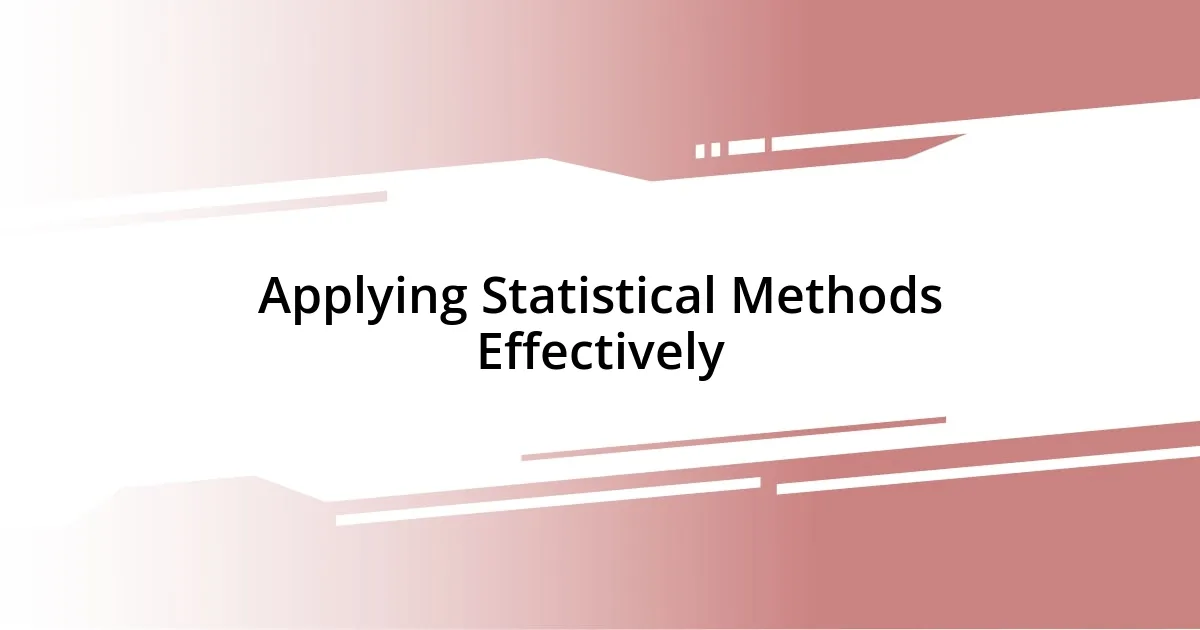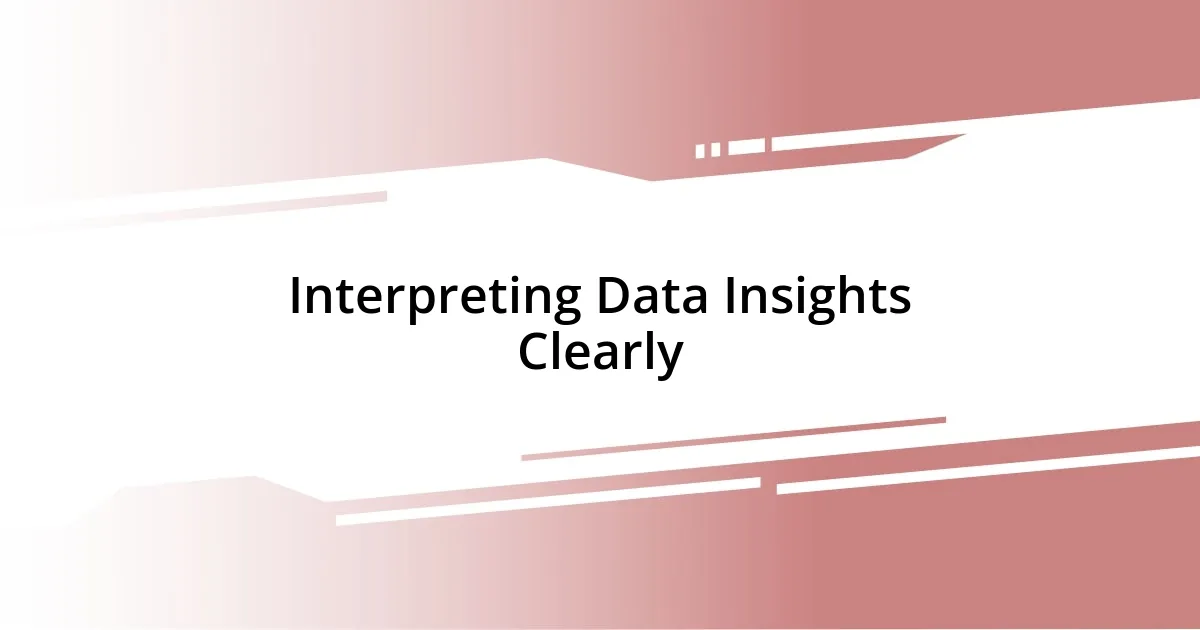Key takeaways:
- Data analysis combines storytelling with data; starting with clear objectives and clean data is crucial for valuable insights.
- Diverse key data sources enhance analysis accuracy and help uncover hidden patterns; always consider internal databases, public datasets, social media, industry reports, and customer feedback.
- Effective communication of findings requires clarity and relatable visuals, ensuring stakeholders understand and engage with the data.
- Implementing continuous improvement strategies through feedback loops and data-driven decision-making fosters collaboration and drives project success.

Understanding Data Analysis Fundamentals
Data analysis isn’t just about number crunching; it’s about storytelling with data. I still remember a project early in my career where I was buried under spreadsheets, desperately trying to find meaning in the chaos. Have you ever felt lost in a sea of data? It made me realize how essential it is to start with clear objectives before diving into the analysis.
Understanding data analysis fundamentals means grasping the significance of context. It’s fascinating how the same dataset can tell vastly different stories depending on the angle from which we look at it. I often ask myself: “What am I really trying to uncover here?” This question helps me stay focused on the goal of my analysis, ensuring that I extract actionable insights rather than just pretty graphs.
Another crucial aspect of data analysis is recognizing the importance of clean data. Once, I encountered a dataset riddled with errors, and it dawned on me how detrimental this could be. Do you realize how much a small flaw can skew your results? It’s imperative to prioritize data quality, as this foundation allows for more accurate and reliable analysis, ultimately leading to better decision-making.

Identifying Key Data Sources
Identifying key data sources is a foundational step in any analytical endeavor. I vividly recall a time when I was tasked with analyzing customer behavior for a marketing campaign. Initially, I focused solely on internal data from our CRM. However, as I broadened my search to include social media metrics and industry reports, the insights became much richer. A diverse range of sources not only enriches the analysis but also uncovers hidden patterns that can drive impactful decisions.
Here are some key data sources I often consider during my analysis:
- Internal Databases: Sales records and customer interactions can reveal essential trends.
- Public Data Sets: Government statistics or census data often provide demographic insights.
- Social Media Analytics: Platforms like Twitter and Facebook can offer sentiment and engagement metrics.
- Industry Reports: Publications from market research firms help in benchmarking and contextual understanding.
- Surveys and Feedback: Direct input from customers provides valuable qualitative data.
Finding the right combination of these sources can feel like piecing together a puzzle. It not only enhances accuracy but fosters a deeper understanding of the subject matter.

Selecting Appropriate Data Analysis Tools
Selecting the right tools for data analysis can significantly influence the effectiveness of your findings. I remember when I first dove into this process, overwhelmed by the sheer number of software options available. Initially, I chose a popular tool because everyone else was using it, but I quickly realized that it didn’t meet my specific needs. It’s essential to assess what functionalities are critical for your project, whether it’s statistical analysis, data visualization, or integration capabilities.
As I became more experienced, I understood the importance of matching tools with the scale and complexity of the data I was analyzing. For instance, using advanced software for simple tasks can lead to wasted resources and time. I often recommend defining your objectives first, then exploring tools that align with those goals. This way, you ensure that the tools enhance your analysis rather than complicate it.
To streamline this selection process, I found it helpful to create a comparison table that outlines key features, ease of use, and pricing of potential tools. This table not only clarifies my choices but also serves as a handy reference for future projects. It’s amazing how a simple visual aid can guide you toward better decisions.
| Tool | Key Features | Ease of Use | Price |
|---|---|---|---|
| Tableau | Data visualization, user-friendly | High | Subscription-based |
| R | Statistical analysis, open-source | Moderate | Free |
| Excel | Spreadsheet functions, basic analysis | Very High | One-time purchase |
| Python | Data manipulation, extensive libraries | Moderate | Free |

Applying Statistical Methods Effectively
Applying statistical methods effectively requires not just a theoretical understanding but also practical application. I’ll never forget the moment I tackled a regression analysis for a project that initially seemed daunting. I went in with a rigid mindset, almost treating the equations like foreign languages. But when I allowed myself to experiment with the data, exploring relationships without overthinking the formulas, I found intriguing correlations that resonated with my objectives. Isn’t it fascinating how flexibility in approach can lead to breakthroughs?
As I delved deeper into statistical techniques, I learned the significance of context. For example, while working on a customer satisfaction survey, I discovered that statistical significance was just one piece of the puzzle. The real value lay in interpreting the results in a way that resonated with stakeholders. I vividly remember translating dry numbers into compelling narratives that highlighted customer emotions. This allowed the team to connect with the data on a human level. How often do we overlook the story behind the statistics, focusing only on the figures themselves?
Finally, I’ve come to appreciate the role of continuous learning in mastering statistical methods. Early in my career, I relied heavily on textbook examples, thinking they represented real-world scenarios. However, I’ve found that attending workshops, participating in webinars, and engaging with peers in forums can provide fresh perspectives and practical insights. A great question to ask yourself is: Are you staying open to new statistical techniques and trends, or have you confined yourself to what you already know? Embracing this mindset has opened new doors for me, allowing me to enhance my analyses with innovative methods.

Interpreting Data Insights Clearly
Interpreting data insights clearly is like translating a complex language into something everyone can understand. I recall a project where I analyzed customer feedback data with numerous metrics. Instead of bombarding my team with raw numbers, I focused on distilling these insights into key themes that truly resonated with their experiences. Have you ever tried to explain data to someone who’s not familiar with the intricacies? It’s often more about storytelling than just presenting figures.
One aspect that often gets overlooked is the visual representation of data. I vividly remember creating a dashboard filled with graphs and charts for a presentation, thinking it looked impressive. However, during the Q&A, it became evident that most of my audience was confused. From that moment, I realized the importance of simplicity in visualization. Crisp visuals that highlight key insights make a massive difference. Do you think people are more inclined to grasp the information when it’s presented clearly?
As I’ve developed my approach, I’ve found it beneficial to always ask, “What does this mean for my audience?” This mindset shifts the focus from the data itself to its practical implications. For instance, when interpreting sales trends, I’d relate the data to how it impacts team targets or customer engagement. By doing this, I find a genuine connection that transforms the analysis from just numbers into actionable insights. Isn’t it rewarding to see the light bulb go on in someone’s eyes when they finally understand the data?

Communicating Findings to Stakeholders
Communicating findings to stakeholders requires a blend of clarity and relatability. I remember once presenting the outcome of a market analysis to our executive team. Instead of drowning them in statistics, I crafted an engaging story around the findings, showcasing how our data supported strategic goals. It was a game-changer; seeing their eyes light up as they connected with the narrative pushed me to realize that data has the power to drive decisions when presented well.
Visual tools are essential in communicating findings effectively. I have a vivid memory of a stakeholder meeting where I used a single, impactful infographic to illustrate a complex data trend. The simplicity of the visual not only captured attention but also sparked a lively discussion about implications. It made me realize: how can we expect stakeholders to act on data if they can’t easily grasp its meaning? Strong visuals bridge that gap, turning potentially dry insights into dynamic conversations.
Ultimately, the impact of my communication hinges on understanding my audience. There was a time I presented technical jargon to a group unfamiliar with data analytics, and the room grew quiet, almost uncomfortable. I learned that tailoring my language and examples to their level of understanding fosters trust and engagement. What strikes me is how a few well-chosen words can turn a complex analysis into something relatable. Don’t you think we owe it to our stakeholders to ensure they feel empowered by the information we provide?

Implementing Continuous Improvement Strategies
Implementing continuous improvement strategies hinges on the willingness to embrace feedback loops. I’ve worked on several projects where, after each phase, we gathered input from all stakeholders involved. This practice not only nurtured a culture of collaboration but also led to actionable insights that directly enhanced our processes. Have you ever seen how incremental changes can lead to significant outcomes? It’s genuinely fascinating.
Another key element is leveraging data to drive decision-making. I once led a team that adjusted our marketing strategy based on real-time performance metrics. Initially, we were hesitant about changing course so frequently, but the data revealed clear trends that we couldn’t ignore. This experience taught me that flexibility and responsiveness in data analysis can catapult a project forward. Isn’t it empowering to know that our decisions are grounded in solid evidence?
Finally, I’ve found that celebrating small wins can motivate teams to keep pushing for improvement. In one project, we tracked monthly progress against our goals and took time to recognize team members for their contributions. It was incredible to see how this acknowledgment sparked enthusiasm and commitment to the continuous improvement cycle. How can we harness this positive energy to propel our future initiatives? It’s about creating an environment where everyone feels valued and invested in the journey.














